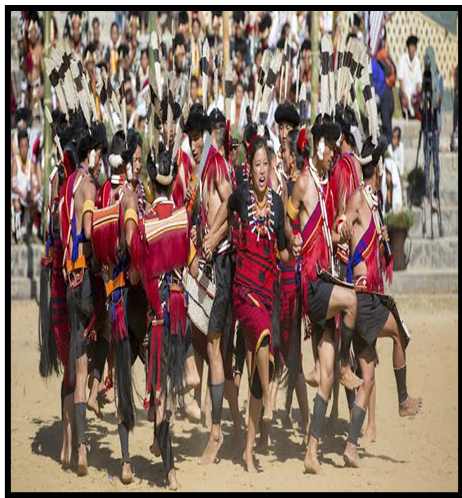HORNBILL FESTIVAL
Held annually in Nagaland, the 24th Hornbill Festival is set to unite 16 Naga tribes for a vibrant 10-day celebration of culture, music, and dance.
Source: The Hindu
About Hornbill Festival:
- Named after the hornbill, a culturally significant bird symbolizing fidelity, beauty, and grace in Naga folklore.
- Showcases the rich cultural heritage of the State.
- Venue :Takes place at the heritage village of Kisama, 12km from the capital, Kohima.
- Commences on Nagaland
Statehood Day, December 1, and spans 10 days.
- Festival Highlights:
- Exhibition of crafts and handloom products.
- Food festival featuring Naga cuisine.
- Wrestling championship,
- solo and group dance competition, and
- A vlogging contest.
- Land of Festivals:Nagaland is renowned for its festivals, with the Hornbill Festival considered the “festival of festivals.”
A cultural extravaganza attracting diverse audiences locally and globally.
About Great Hornbill:
- Belongs to the larger hornbill family.
- Native to the Indian subcontinent and Southeast Asia.
- Conservation Status:
- Initially classified as “Near Threatened.”
- Currently designated as “Vulnerable”
- Threat due to habitat loss, deforestation, and substantial hunting.
-
- Ecological Significance:
- Vital indicators of forest health.
- Acknowledged as “farmers of the forest” for their role in seed dispersal.
- State Bird Status:
- Holds the status of the state bird in Kerala and Arunachal Pradesh.
- Not designated as the state bird in Nagaland, despite the Hornbill Festival celebration.
- CITES Classification:
- Listed under Appendix I of the Convention on International Trade in Endangered Species of Wild Fauna and Flora (CITES).
- Threats to Great Hornbill:Faces threats such as logging, forest clearance for agriculture, and susceptibility to hunting pressure.
- Ecological Significance:

 Source: The Hindu
Source: The Hindu

